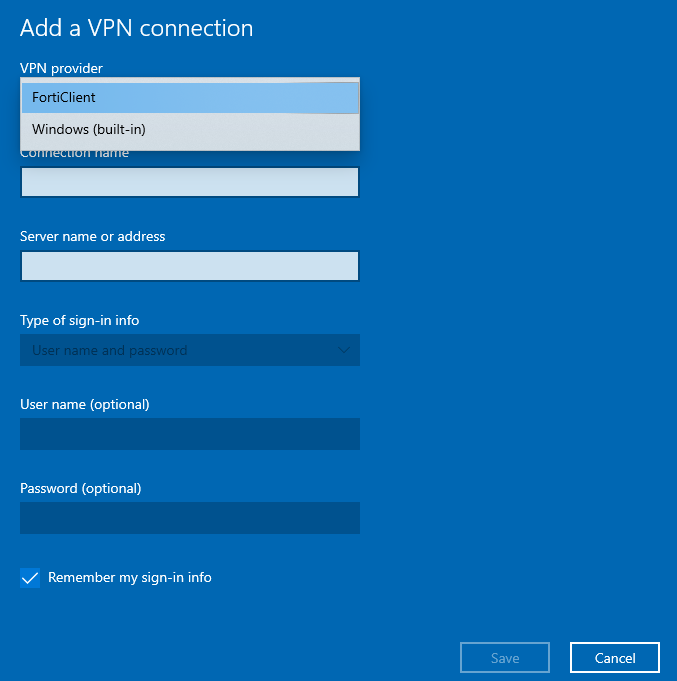
- How to install fortinet vpn client how to#
- How to install fortinet vpn client password#
- How to install fortinet vpn client Pc#
How to install fortinet vpn client password#
Make sure to push “I accept”.Įnter the following information as shown below, please make sure to use your Lakehead Username.Įnter your Username & Password and click "OK".

Open the FortiClientVPNOnline. Once you click download, you can start the installation by opening the file located in your download folder. When you first open the app, this screen will pop-up. The first step to deploy FortiClient VPN is to exact the MSI file from the FortiClient installer, as you can see the installation from the vendor is a. Fortinet VPN Client instructions for Windows. Enter the settings in each field as shown below.įortiGate Server Address : ĭownload the client from the App Store (use the link above). Enter VPN name, select SSL VPN, then tap create.ĥ. Tap "New VPN" on the lower left corner.ģ.

Note: For version 7 of this install, you may receive a security alert stating "a secure connection cannot be verified".
How to install fortinet vpn client how to#
Please disable this feature if you leave your computer unattended for longer periods of time or connect to a wired connection. The VPN solution is provided by Fortinet. This article will show you how to install the FortiNet VPN on your Windows PC. The following example installs FortiClient build 1131 in quiet mode, creating a log file with the name 'Log': FortiClientSetup 6.0.1. The following table summarizes the installation options available when using the CLI. Windows "Power saving mode" may interrupt or disconnect you from the network. Installing FortiClient using the CLI You can install FortiClient using the CLI.
How to install fortinet vpn client Pc#
**Please note: Windows PC users may experience random connectivity issues when you connect a Windows-based mobile PC to a wireless home network. On the Remote Access tab, select the VPN connection from the dropdown list. Once your work is complete, you can simply disconnect the client to end your sessions. This access includes file shares, printers and internet traffic. VPN or Virtual Private Network allows you to connect from outside our network, create a secure encrypted connection and access internal resources as if you were connected locally, on campus.


 0 kommentar(er)
0 kommentar(er)
